
Browse an alphabetical list of photographs. These historical images portray people, places, and events before, during, and after World War II and the Holocaust.
<< Previous | Displaying results 2451-2475 of 2641 for "Photo" | Next >>
A United Nations Relief and Rehabilitation Administration (UNRRA) worker with a survivor of the Buchenwald concentration camp after liberation. Germany, June 13, 1945. The mission of UNRRA was to provide economic assistance to European nations after World War II and to repatriate and assist the refugees who came under Allied control.
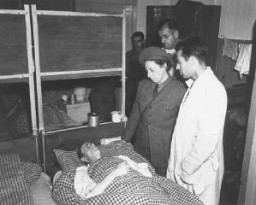
US soldiers of the 4th Armored Division survey the dead at Ohrdruf, a subcamp of the Buchenwald concentration camp. Germany, April 1945.
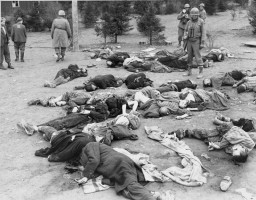
Members of the US 9th Armored Division meet up with Soviet units near Linz, Austria. This photograph was taken by US Army Signal Corps photographer Arnold E. Samuelson. Austria, May 2, 1945.
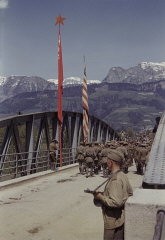
Members of the US 9th Armored Division meet up with Soviet units near Linz, Austria. This photograph was taken by US Army Signal Corps photographer Arnold E. Samuelson. Austria, May 2, 1945.

A US army officer (far right) poses with survivors of the Ohrdruf camp, a subcamp in the Buchenwald camp system. Photograph taken after the liberation of the camp. Ohrdruf, Germany, April 1945.

US Army Signal Corps photographer J Malan Heslop types photo captions. France, 1944.
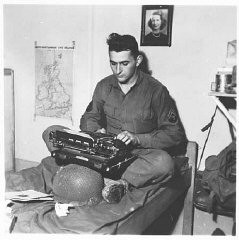
US Army Signal Corps photographers from Combat Unit 123 photograph ruins in the city of Naumburg, Germany. Photograph taken by J Malan Heslop. April 10, 1945.
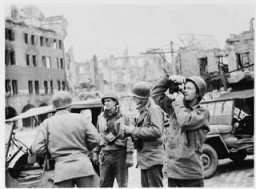
A US Army soldier views the cemetery at Hadamar, where victims of the Nazi euthanasia program were buried in mass graves. This photograph was taken by an American military photographer soon after the liberation. Germany, April 5, 1945.
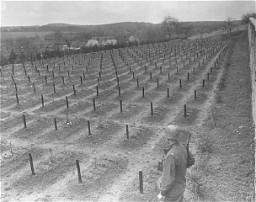
Otto Perl poses with his US Army unit at Camp Ritchie, Maryland, circa 1945. Born in Austria, Perl served in the Austrian Army until March 1938, when he was dismissed because he was Jewish. With the help of a friend, Perl was able to obtain a US visa. He reached New York in 1940. Several thousand of the soldiers who trained at Camp Ritchie were Jewish refugees who had immigrated to the United States to escape Nazi persecution.
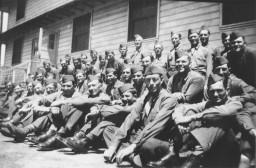
Bombing raid over the I.G. Farben Buna plant. Poland, August 1944.
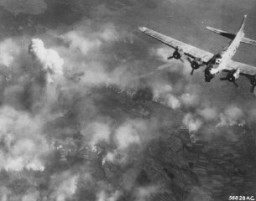
Members of a US congressional committee investigating German atrocities view a V-2 rocket on the assembly line of an underground factory at the Dora-Mittelbau concentration camp, near Nordhausen. Germany, May 1, 1945.
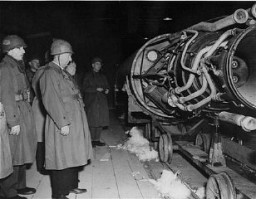
Generals Eisenhower, Patton, and Bradley view corpses of inmates at Ohrdruf, a subcamp of Buchenwald. Germany, April 12, 1945.
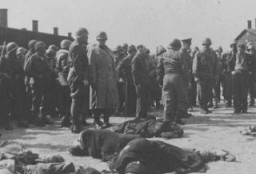
During the Nuremberg Trial, American guards maintain constant surveillance over the major Nazi war criminals in the prison attached to the Palace of Justice. Nuremberg, Germany, November 1945.
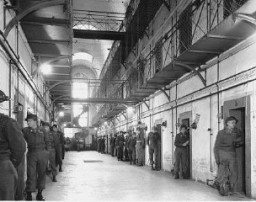
An amphibious troop carrier loaded with US Marines heads for the beaches of Tinian, an island in the Pacific Ocean. July 1944.
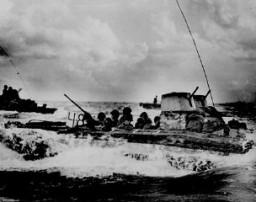
US Marines during the final stage of the fight for Peleliu Island in the Pacific theater of war. September 14, 1944.
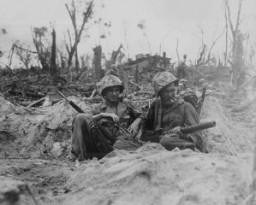
During the 1936 Olympics in Berlin, US runner Jesse Owens begins the 200-meter race in which he established a new Olympic record of 20.7 seconds. Berlin, Germany, August 2, 1936.
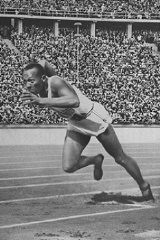
A US soldier on an inspection tour of Buchenwald poses for a photograph beside a wagon laden with corpses. The soldier is probably a member of the Headquarters and Service Company, 183rd Engineer Combat Battalion, 8th Corps, US 3rd Army, which arrived at Buchenwald on April 17, 1945, several days after the camp's liberation.
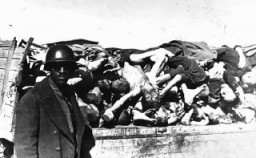
Surrounded by destruction, US soldiers of the 23rd Infantry fire a gun during World War I, 1918.
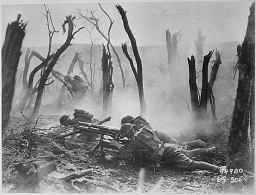
US soldiers view bodies of victims of Kaufering, a network of subsidiary camps of the Dachau concentration camp. Landsberg-Kaufering, Germany, April 30, 1945.
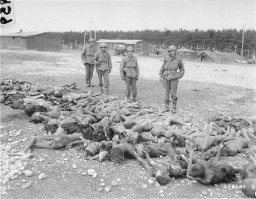
US soldiers view the bodies of prisoners found in the newly liberated Ohrdruf concentration camp. Ohrdruf, Germany, April 6, 1945.
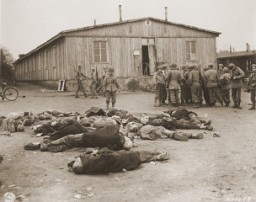
While on an inspection tour of the newly liberated Ohrdruf concentration camp, American soldiers view the charred remains of prisoners burned upon a section of railroad track during the evacuation of the camp. Ohrdruf, Germany, April 4-15, 1945.
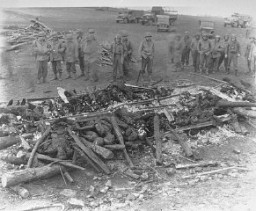
Supply ships reinforce US forces on the Philippine island of Leyte during the US invasion of the Philippines. 1944.
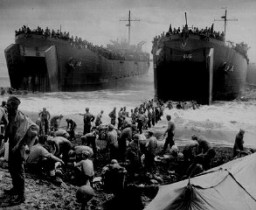
US troops with the 102nd Infantry Division at a barn outside Gardelegen, where over 1,000 prisoners were burned alive by the SS. Germany, April 14, 1945.
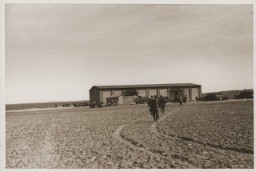
On May 2, 1945, the 8th Infantry Division and the 82nd Airborne Division encountered the Wöbbelin concentration camp. This photograph shows US troops in the Wöbbelin camp. Germany, May 4–6, 1945.
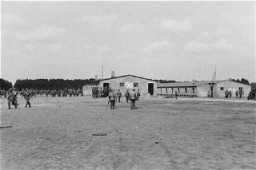
US soldiers enter the Buchenwald concentration camp following the liberation of the camp. Buchenwald, Germany, after April 11, 1945.
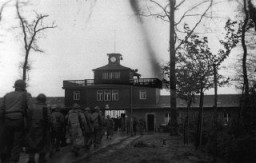
We would like to thank Crown Family Philanthropies, Abe and Ida Cooper Foundation, the Claims Conference, EVZ, and BMF for supporting the ongoing work to create content and resources for the Holocaust Encyclopedia. View the list of donor acknowledgement.